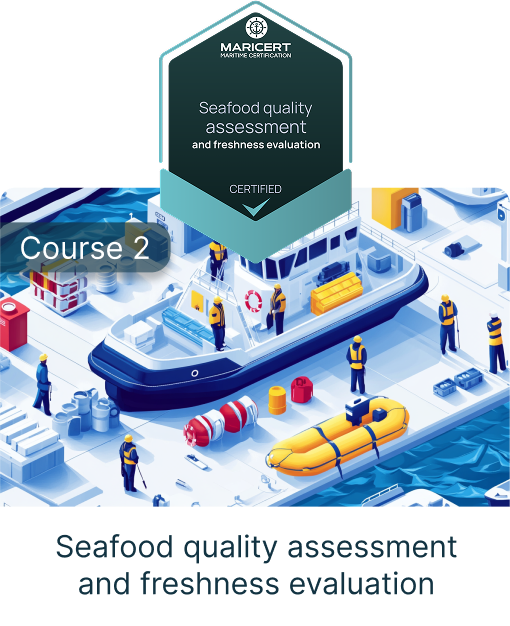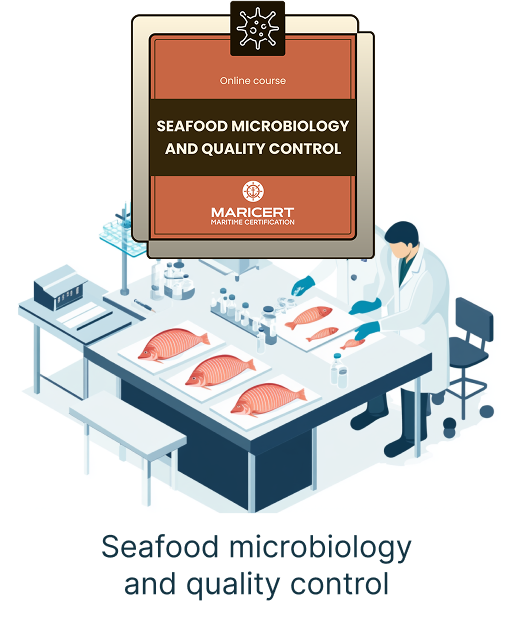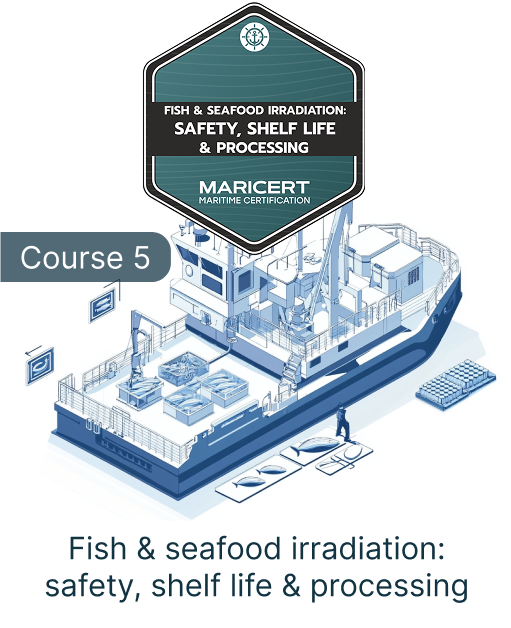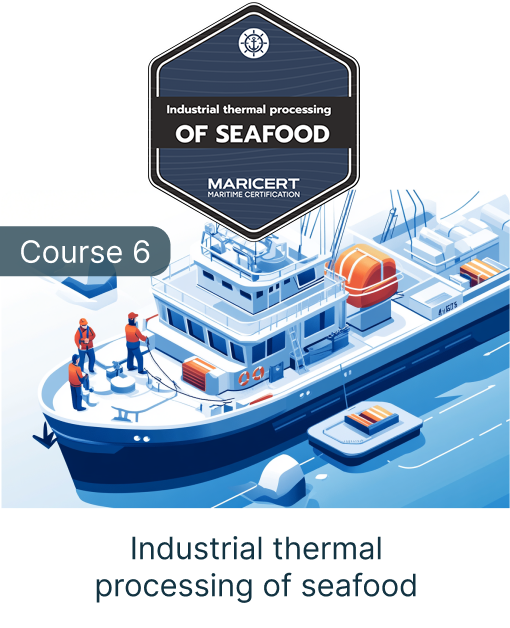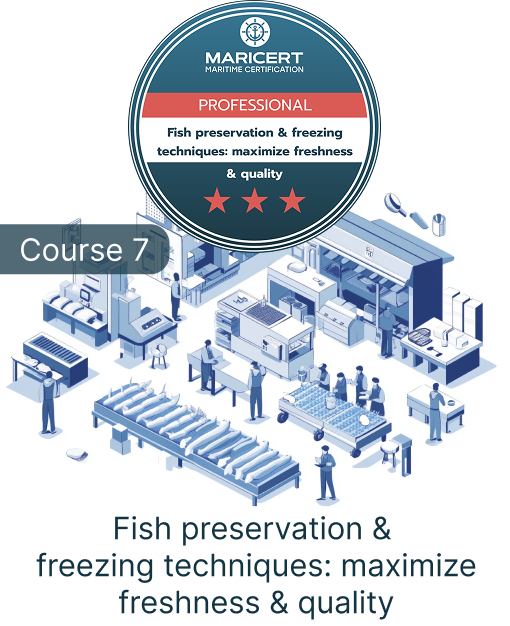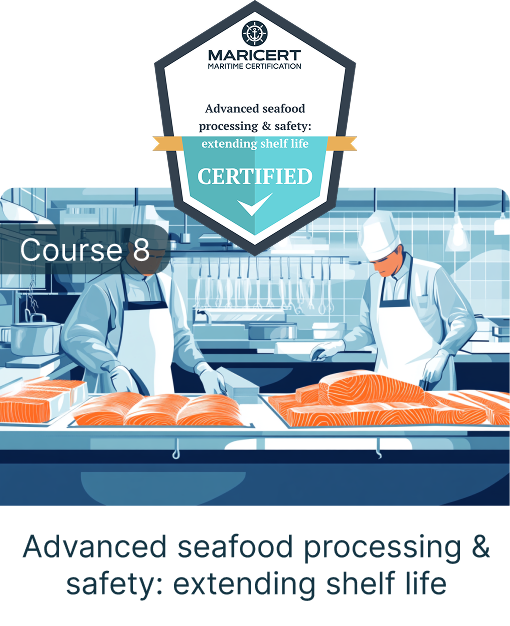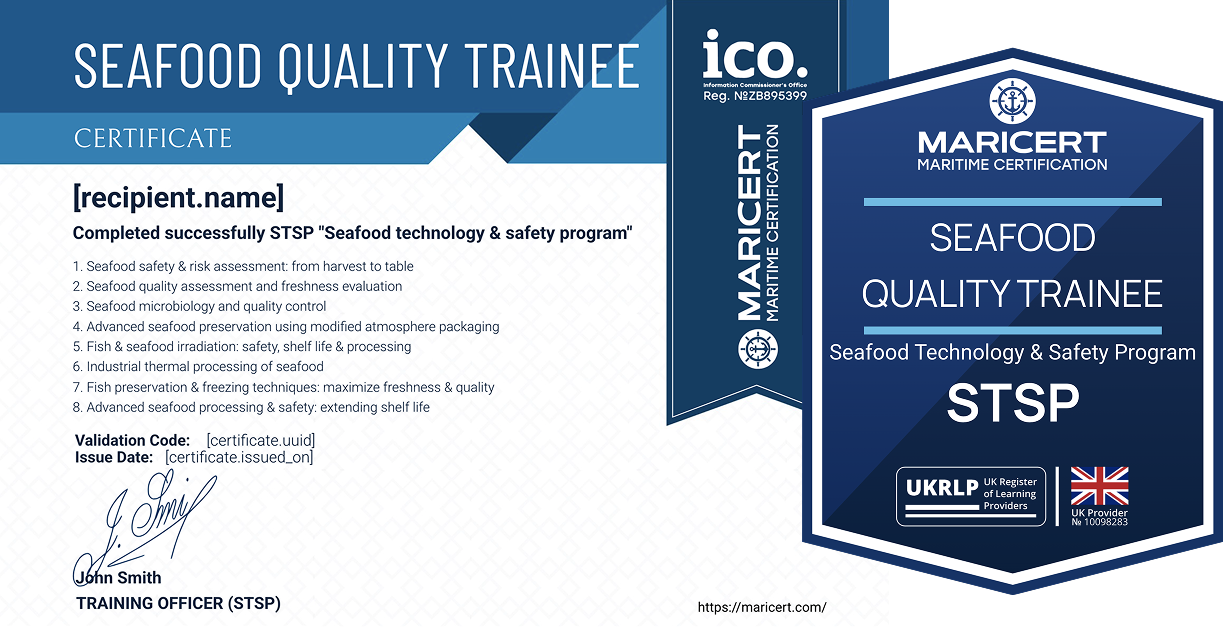Seafood safety & risk assessment: from harvest to table
LESSONS
- Glossary
- Seafood safety and the evolution of HACCP
- Seafood safety: risk vs hazard and HACCP evolution
- Microbiological risk assessment
- Hazard identification in seafood safety
- Exposure assessment in food safety
- Consumption data and hazard assessment
- Dose–response models and risk characterization
- Approaches to risk characterization
- Qualitative and semi-quantitative risk estimation
- Cholera risk from imported shrimp
- Balancing risk and policy in food safety
- Referenses
- Test
- Certificate
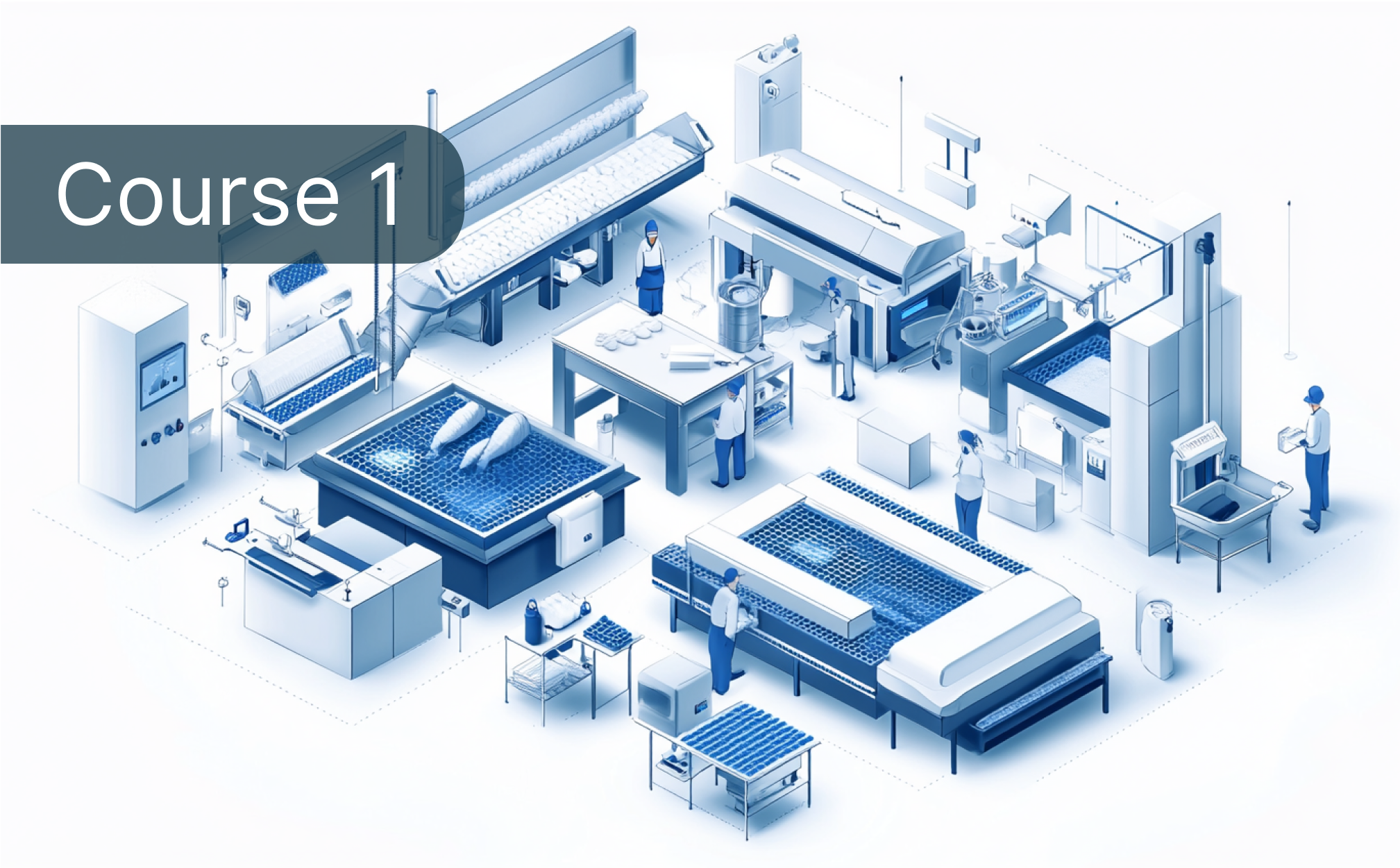

Duration
7–9 hours for studying the theoretical material, 2 hours for completing the final test.
Certificate
Upon successful completion of the online course, you will receive a certificate titled:
"Advanced Seafood Processing & Safety: Extending Shelf Life".
lifetime certificate.
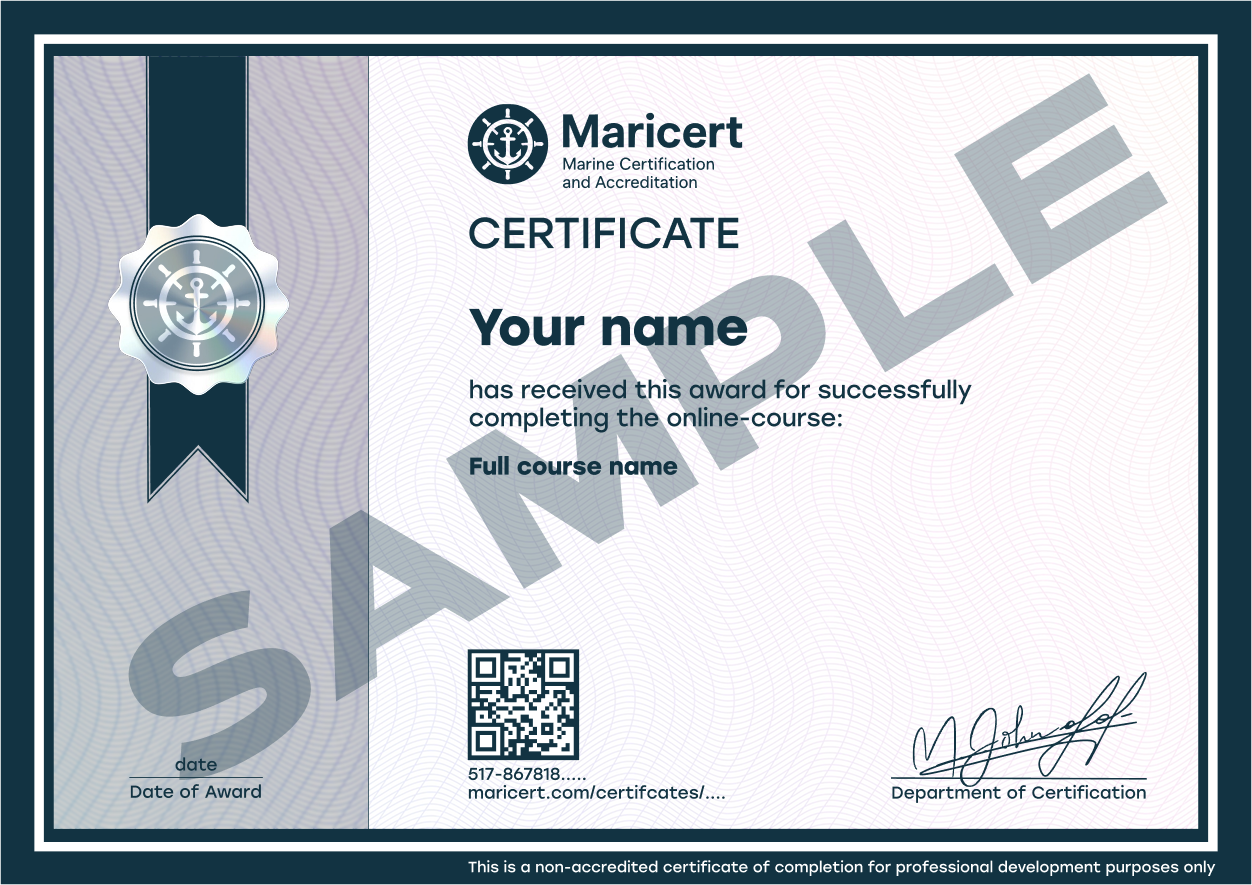

SEAFOOD TECHNOLOGY AND SAFETY PROGRAM
Each certificate has a unique serial number, is registered in our database, and includes a QR code for authenticity verification. Add your certificates when sending your CV, and your future employer will be able to verify them.
Course description
This course explores the critical role of microbiology in seafood safety and quality assurance. Through scientific concepts and real-world case studies, students gain an in-depth understanding of microbial hazards, their sources, and their behavior in marine products. The program covers predictive microbiology, hazard identification, exposure assessment, and the principles of microbiological risk assessment. Students learn how microbial risks are characterized, quantified, and managed under regulatory frameworks like HACCP and Codex Alimentarius. Emphasis is placed on integrating microbiological data with practical decision-making in seafood processing, storage, and trade. Special attention is given to pathogens like Listeria monocytogenes and Vibrio species, and to the use of advanced tools such as Monte Carlo simulation, dose–response models, and risk profiling. By the end of the course, students will be able to assess risks, apply critical limits at control points, and develop science-based quality control plans. This course is designed to prepare learners for professional roles in seafood microbiology, inspection, and compliance across global markets.
What you’ll learn
- How to identify and assess microbial hazards in seafood
- The difference between hazard and risk in food safety
- The core steps of microbiological risk assessment
- Application of predictive microbiology in seafood systems
- How to use tools like Monte Carlo simulation and Risk Ranger
- Principles of HACCP and their integration with microbiological control
- Global regulatory frameworks for seafood safety
- Strategies for microbial risk communication and management
Who this course is for
- Quality control professionals in seafood processing
- Food safety officers and inspectors
- Regulatory compliance managers
- Students and researchers in food microbiology
- Professionals working in seafood export and trade
- Anyone involved in seafood supply chain safety management
FAQ
First, please check your spam or promotions folder — sometimes emails land there. If you still don’t see anything, contact us at https://maricert.com/contact/ — we’ll check your order and grant access as soon as possible.
You can retake the test as many times as needed. There are no penalties or additional fees.
Yes. All lessons and tests are in written format. You can use Google Chrome with auto-translation or third-party tools. Our goal is to make learning accessible to everyone.
Absolutely. The platform is fully optimised for mobile. You can study from your phone, tablet, or laptop — whichever is most convenient for you.
You get 12 months of access from the date of purchase. You can study at your own pace. If the course isn’t completed within that period, access will be revoked without a refund. Refunds are not available once access is granted, as digital content is considered delivered in full (as per the UK Consumer Contracts Regulations 2013).
Your certificate will be sent to your email and also registered in the Certifier.io verification database. You'll receive a PDF version that you can attach to your CV.
Each certificate includes a unique ID and QR code. Employers can verify authenticity via the Certifier database or directly through the Maricert website.
Yes. We recommend including a direct Certifier.io link in your CV, cover letter, or LinkedIn profile to help build trust with employers.
No. Our courses are open to everyone, including beginners. You don’t need any maritime documents to enrol.
They can be added to your CV when applying for jobs on crabbing vessels, fishing fleets, seafood factories, and maritime logistics companies. They’re especially valuable for those with no prior experience.
Yes. While our certificates don’t guarantee a visa, they can serve as additional proof of qualifications when applying for seasonal or work visas.
We are not a recruitment agency, but our certificates and diplomas can improve your chances when applying directly to employers — especially if you’re new to the industry.
Yes. Maricert is officially registered in the UK Register of Learning Providers (UKPRN: 10098283) and complies with ICO (Information Commissioner's Office) data protection regulations.
Yes. You can purchase a course using another person’s email address or contact support to have access transferred after the purchase.


